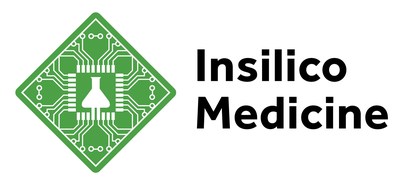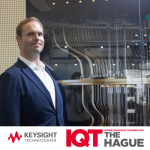Quantum News Briefs: January 29, 2024: Infleqtion Accelerates Commercialization of Quantum Products at Scale with Silicon Photonics Acquisitions; Intel collaborates with UMC to develop new 12nm process node; PsiQuantum Leads the Way in Quantum Computing for Climate Tech with New Partnership with Mitsubishi Groups; AFRL, Brookhaven National Laboratory sign MOU to strengthen quantum communication, networking collaboration; and MORE!

Quantum News Briefs: January 29, 2024:
Infleqtion Accelerates Commercialization of Quantum Products at Scale with Silicon Photonics Acquisitions
![]()
Infleqtion, a leader in quantum information technology, has strategically acquired SiNoptiq, Inc. and Morton Photonics Inc., enhancing its capabilities in the quantum technology sector. These acquisitions are a significant step in Infleqtion’s efforts to commercialize quantum products such as sensors and quantum computers by facilitating chip-scale integration of lasers, photonic, and atomic systems. Scott Faris, CEO of Infleqtion, emphasized the importance of scaling manufacturing and the supply chain to transition quantum technologies from laboratories to customer hands. The United States has faced challenges in the quantum supply chain due to limited suppliers and commercial manufacturing capabilities. Infleqtion’s investment in SiNoptiq and Morton Photonics, both of which produce vital quantum components, aims to shift these technologies from R&D to commercial production at scale. SiNoptiq specializes in high-performance photonics with its silicon nitride platform, which is essential for quantum applications. Its CEO, Dr. Dan Blumenthal, joins Infleqtion as Chief Photonics Architect, bringing a wealth of knowledge and an impressive IP portfolio. Morton Photonics, under the leadership of Dr. Paul Morton, focuses on advanced silicon photonics components for various applications, including microwave photonics and sensing systems. Dr. Morton will become Vice President of Photonics at Infleqtion and General Manager of the new Infleqtion Santa Barbara Research Center. These acquisitions bolster Infleqtion’s position at the forefront of quantum innovation, adding over 40 foundational patents to its portfolio. The company’s recent achievements include participation in Japan’s Quantum Moonshot program and the launch of Oqtant, the first quantum matter service. Infleqtion’s presence at SPIE Quantum West 2024 will showcase its advancements, including live demonstrations of its groundbreaking products and technologies.
Intel collaborates with UMC to develop new 12nm process node

Intel has partnered with United Microelectronics Corporation (UMC) to develop a 12nm semiconductor process for markets like communication infrastructure and networking, with production commencing in 2027 at Intel’s Arizona facilities. UMC will contribute RF and WiFi production technologies and handle the go-to-market activities, leveraging its extensive global presence. This collaboration is part of Intel’s strategy to become the world’s second-largest foundry by 2030. It could significantly boost its financial performance, as demonstrated by a 63% annual revenue increase in its foundry services despite overall revenue decline in recent years.
PsiQuantum Leads the Way in Quantum Computing for Climate Tech with New Partnership with Mitsubishi Groups

PsiQuantum and Mitsubishi UFJ Financial Group (MUFG) have partnered with Mitsubishi Chemical Group to simulate excited states of photochromic molecules, aiming to revolutionize industries with applications like smart windows and energy-efficient materials. This joint venture, part of the Qlimate initiative, harnesses fault-tolerant quantum computing to tackle complex computational problems and develop sustainable technology. Focusing on diarylethenes for photoswitching applications, the project seeks to establish the feasibility of high-accuracy estimates on early-generation fault-tolerant quantum computers. The collaboration combines Mitsubishi Chemical’s extensive experience in computational chemistry with PsiQuantum’s expertise in quantum computing, aiming to surpass the limitations of traditional methods like Density Functional Theory in predicting material properties. This partnership is a strategic move for MUFG to support sustainable technology innovation and positions Mitsubishi Chemical at the forefront of leveraging quantum computing for sustainable materials research.
AFRL, Brookhaven National Laboratory sign MOU to strengthen quantum communication, networking collaboration
![]()
The Air Force Research Laboratory (AFRL) and the U.S. Department of Energy’s Brookhaven National Laboratory have signed a memorandum of understanding (MOU) to enhance their collaboration in quantum communication and networking. This agreement connects AFRL’s Distributed Quantum Networking Testbed Local Area Network in Rome, New York, with Brookhaven Lab’s Wide Area Quantum Network in the New York City region, establishing the Empire State Quantum Network hub. This initiative explores both near- and long-term opportunities in quantum networking. U.S. Senate Majority Leader Chuck Schumer praised this joint effort, highlighting its role in positioning New York at the forefront of quantum communications advancements. The collaboration will integrate the latest scientific knowledge in quantum networking, aligning with the goals of the National Quantum Initiative Act to strengthen national security and advance the U.S. quantum technology industry. Both labs emphasize the importance of this partnership in advancing quantum information science and technology, particularly in the development of large-scale quantum communication systems.
New paper explores how quantum computing can unlock understanding of aging and disease

Researchers from Insilico Medicine, in collaboration with the University of Toronto’s Acceleration Consortium and Foxconn Research Institute, have published a paper in WIREs Computational Molecular Science, showcasing how quantum computing can be integrated with artificial intelligence (AI) to enhance the understanding of biological processes like aging and disease. Their research highlights the potential of quantum generative adversarial networks in generative chemistry, emphasizing the need for multimodal modeling methods to manage the complexities of biological systems. The paper discusses the limitations of AI in processing intricate biological interactions and proposes using quantum computing to augment AI approaches. Quantum computing’s unique ability to process data at an unprecedented scale due to qubits holding multiple values simultaneously is particularly beneficial for interpreting vast and complex biological datasets. This integration of AI, quantum computing, and complex systems physics is a significant step towards developing more effective personalized interventions for various diseases and understanding age-related processes. The authors advocate for a physics-guided AI approach, combining physics-based and neural network models, to better comprehend human biology at multiple scales.
University of California San Diego Researchers Look at the Hidden Depths of Quantum Materials

Scientists at the University of California San Diego, led by Professor Richard Averitt and postdoctoral scholar Sheikh Rubaiat Ul Haque, have made significant strides in uncovering the hidden quantum properties of the material Ta2NiSe5 (TNS) using advanced laser-based techniques. Their research, detailed in Nature Materials, utilized an enhanced version of terahertz time-domain spectroscopy, allowing them to explore a broader range of frequencies. This method, based on a theory by ETH Zürich’s Eugene Demler, revealed how light excitation transforms certain quantum materials into mediums that amplify terahertz frequency light. The team, including Demler’s graduate student Marios Michael and aided by density functional calculations from Angel Rubio’s group at the Max Planck Institute, observed anomalous terahertz light amplification in TNS exciton condensates. These condensates, formed when excitons (bound electron-hole pairs) behave as a single entity, show potential for developing quantum light sources, including entangled light sources. Haque believes this technique can be applied to other materials, opening new avenues in studying light-induced phenomena in quantum materials.
In Other News: Yahoo Finance article: “Could IonQ Become the Next Snowflake?”

IonQ, a company specializing in quantum computing cloud services, faces a challenging path in the cloud services market, contrasting sharply with Snowflake’s successful cloud-based data warehousing business, highlights a new YahooFinance article. With an enterprise value of $2 billion, IonQ is leveraging its “trapped ion” technology to miniaturize quantum processors, aiming for significant advancements in quantum computing power. However, the company is grappling with financial instability, marked by modest revenue and substantial losses, and skepticism over its technological claims following allegations of exaggerating its capabilities. In contrast, Snowflake, valued at $58 billion, has established a strong foothold in the cloud market since its historic software IPO in 2020. The stark differences in market presence, financial health, and technology adoption between IonQ and Snowflake highlight the speculative nature of IonQ’s business in the nascent quantum computing field, contrasting with Snowflake’s established and reliable role in cloud-based data management. IonQ’s journey to potentially becoming a key player like Snowflake in the cloud market remains fraught with challenges and uncertainties.



















